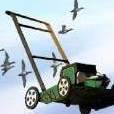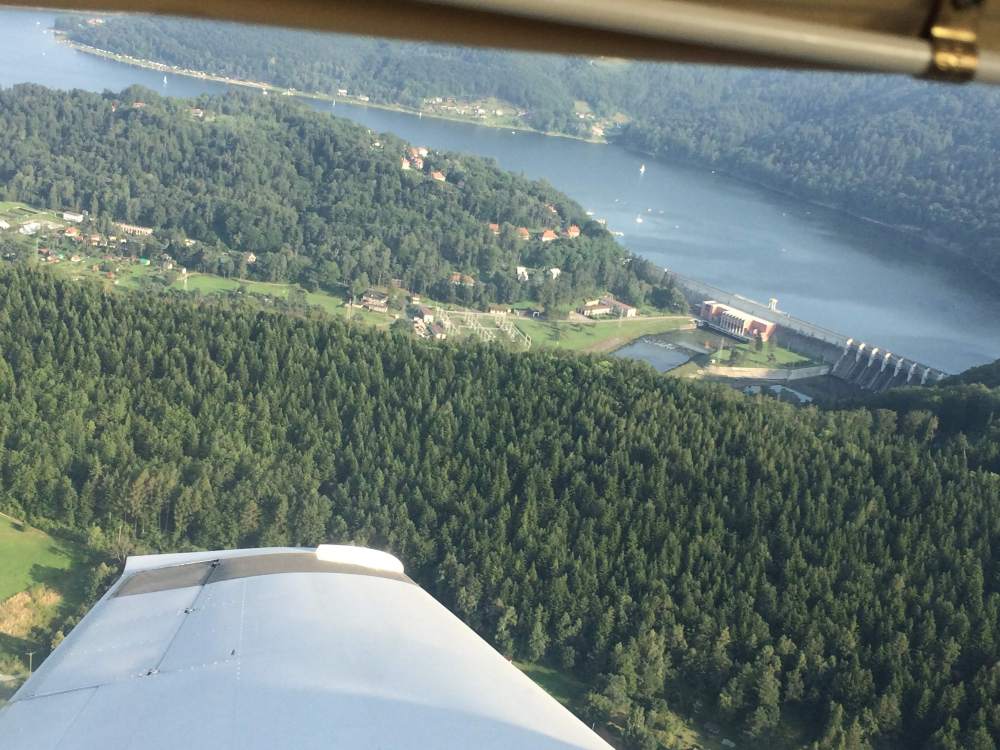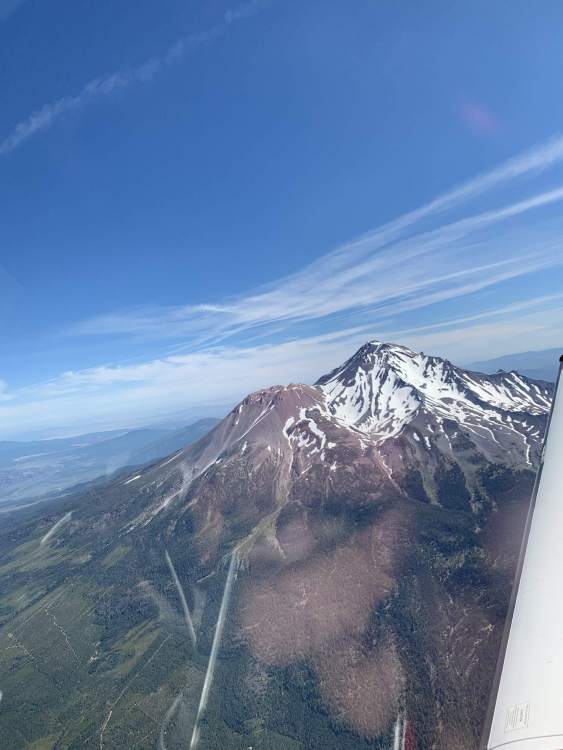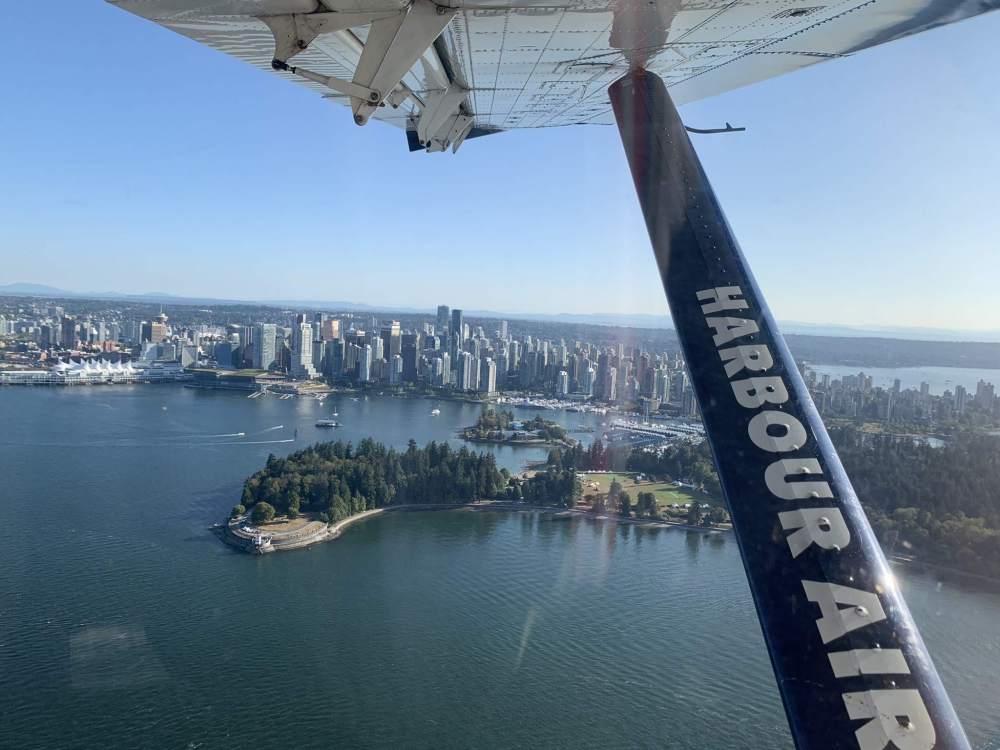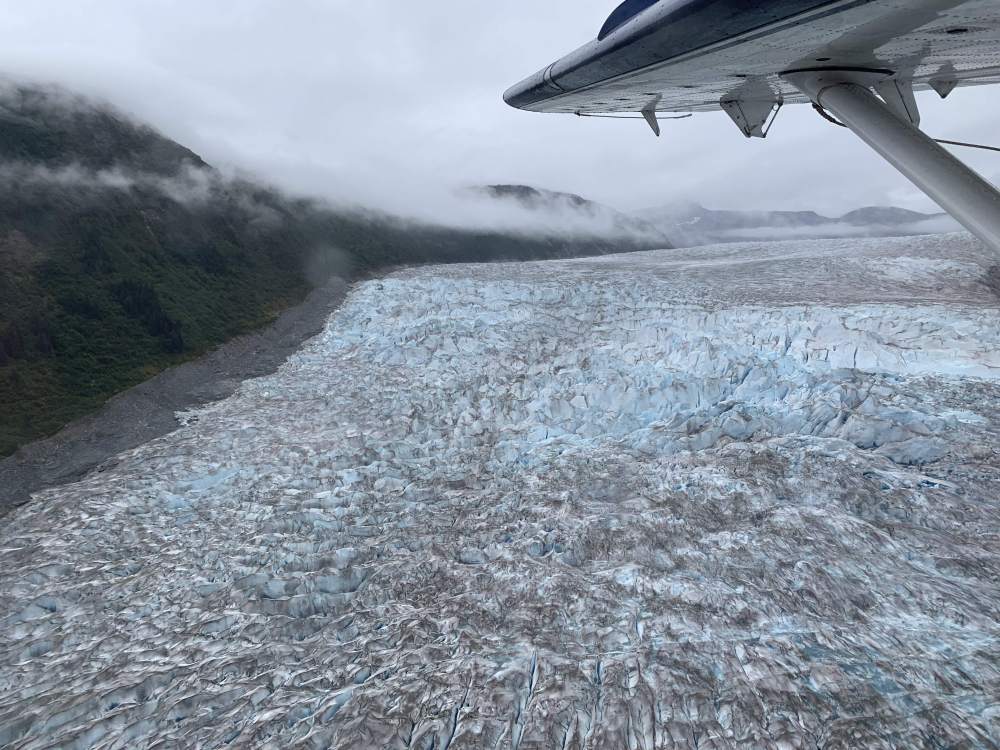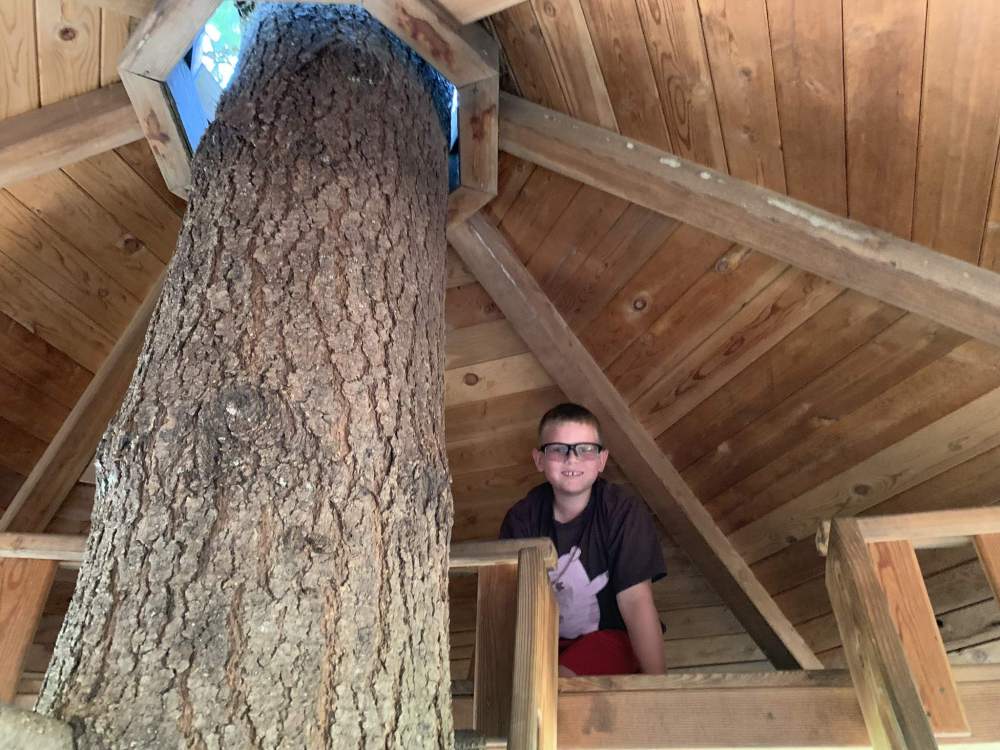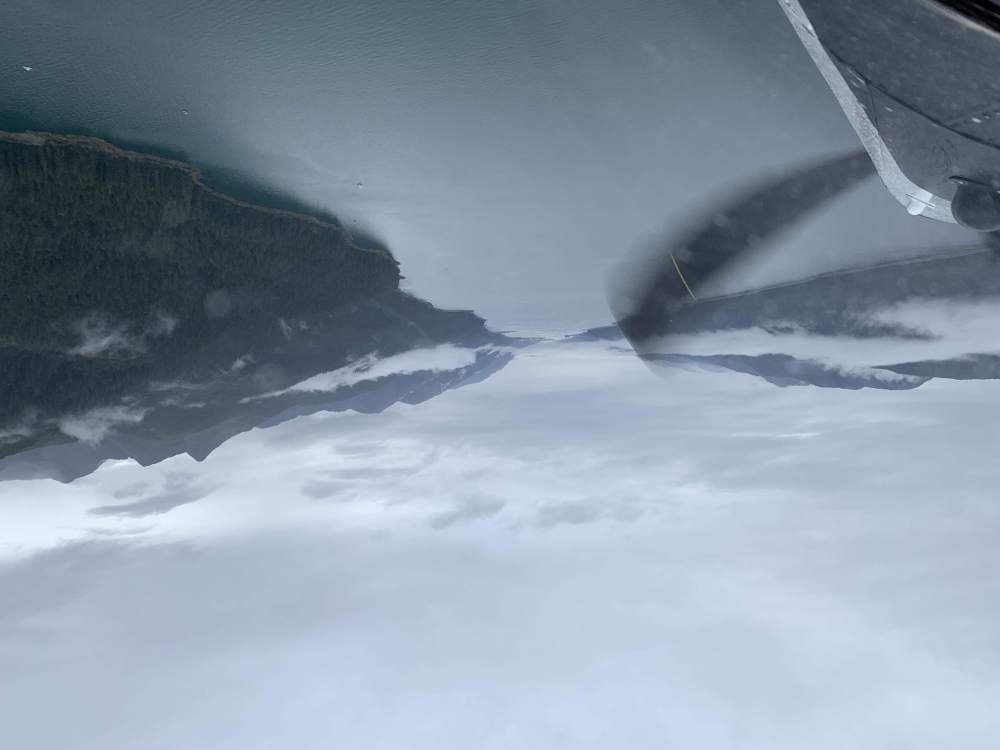Leaderboard
Popular Content
Showing content with the highest reputation on 09/02/2019 in all areas
-
Labor Day weekend trip to Canada with my wife and her mother. We departed Linden (notice the deer by the runway at high noon) and flew directly to Gatineau CYND just outside Ottawa in my Mooney M20J 201. We were met by Yves and his wife. Remember my return from my previous Canada trip where Yves invited me to fly his wing at Oshkosh while I coincidentally was flying over his house? Well, at Oshkosh, Yves and his friend Patrick invited me to their Casey camping fly in trip Labor Day weekend so I decided to go. We got dinner with Yves and Ned in a fantastic restaurant and were served by Yves lovely daughter. In the morning the weather wasn't too great so we delayed a bit. But early in the afternoon we set off to Casey in formation down low to stay below the cloud deck. It was a pretty turbulent day and combined with the low altitude, it just was not practical to maintain tight formation so we kept it loose. Casey is an abandoned Military airport in the middle of the Canadian wilderness northeast of Ottawa, northwest of Montreal. Once a year, the Canadians have a big get together by flying into this well-paved runway in the middle of nowhere. A few spend the night camping but most arrive as a day trip on the Saturday or Sunday for the barbecue event. We found wild blueberries and my mother in-law especially enjoyed collecting them. We watched the airplanes arrive by both land and water. Several seaplanes landed on the river beside the airport. There is no cell signal, phone service, electrical power, or anything out there. Only what you bring. So we enjoyed a night of camping and the barbecue and headed out the next day. The return flight required us to get above the cloud deck so I climbed IFR in uncontrolled airspace on my own until I got high enough to be able to reach flight service and file a return flight plan in the air. I couldn't file on the ground due to the lack of communications. Luckily I had already made my US customs arrangements in advance and stuck to my time slot so those remained active. A quick flight back to Albany and we cleared customs and then onward to Linden to conclude the exciting 3 day trip.7 points
-
So much flying in the last month I haven’t been able to post on this thread. Oshkosh was a blast and look forward to next year! I went up this morning for a short flight to warm up the oil and decided to check out a close by short airport. I didn’t plan on landing but once I flew over it I figured it was doable. It’s now the shortest and narrowest airport in my log book. And probably as back country and tinny airport I’ll ever land at in the Mooney. My wing span being just over 6’ wider than the runway. Landing on 32 you are landing a little up hill but into rising no go around terrain. Another first for me in this plane. Exciting times, now to finish the dirty work.... Sent from my iPhone using Tapatalk5 points
-
Our mercy flight organization has had two A-36 Bo's. Both were/are prone to dropping on their tails if you're not careful loading. We had our bi-monthly meeting on Thursday and two experienced guys did the same thing AGAIN. Unfortunately, every time they do that you end up with structural damage in the back. One of our members, a long time Bo owner, acknowledged this HAS BEEN a problem on Bo's. I won't load heavier passengers without holding the vertical stab. I've even jumped on the wing to load myself from the front side sometimes. I agree with Erik on the seating too. There's no way I could sit for 4 hours in our Bonanza. I'm only 5'9", but my legs cramp because of the high seats, limited rail adjustments, and no room to stretch out. I have probably 300 hours of Bo time. I DO LIKE the plane. My hangar buddy and I were given the go ahead many years ago to find a second plane for our organization, after the purchase of a Seneca and us being the longest active pilots still stuck flying our own planes from lack of a twin rating. I took twin training, 6 hours to be exact, but thought this was crazy. The single engine plane I was building was almost twice as fast on about the same fuel burn and I'd never stay current enough to be safe in it. So...... convinced we would be buying an all weather well equipped Mooney, we ended up picking the Bo. More seats, pretty good speed and efficiency, rear door access for marginally mobile patients. It's been a great plane for the mission, faster and lower fuel burn than the twin, and better payload. It was 10 knots slower (the second one, turbonormalized) than my Rocket in the breathable altitudes on 3.5 gallons an hour less. I always wondered how that thing could fly that fast with those fat wings. Tom4 points
-
I have heard some discussion regarding the advantages or disadvantages of the retractable step. While most will agree it is cool, some disagree as to the advantages. In a recent Facebook post I saw that someone had their vacuum system removed and has the step hanging out without detrimental effect. Before the electric step conversion, I had left my step hanging (original crank equipped aircraft) by accident and recalled noticing because my speeds were lower and the ball was slightly out. Anyway, decided to do some testing on a short trip yesterday and verified that it does make a difference. In fact, it was quite notable when paying attention to the numbers. I’ll call it an average of about 3 knots. I repeated putting the step up and down a few times and it was consistent. I made a rather crude video for those who must see: https://youtu.be/zOD2mXwcOIk. There are two reasons for the significant speed change. One is obvious, it is that the retractable step has zero aerodynamic abilities. It is a large square tube with an equally blunt step. The second is less obvious, but it is the effect of asymmetric drag on the airframe. Those who have left the step out may note that the ball on your turn coordinator will be ever so slightly out of center, requiring a touch of left rudder to counter it. Just like slipping a plane on final induces drag and gets us slower and lower, this slight slip slows our aircraft down. What percent of the drag is due to the step drag vs slip I’m not sure, but it clearly adds up. Mooney’s are especially sensitive to good rigging, as noted by some wide variation in reported performance. Modern Mooney’s have a more aerodynamic step, so Mooney opted out of the retractable step business in the late 60s. I think it would still be cool to have it retract, but it might be somewhat invasive. Anyway, would love to hear from others with detailed side by side speed comparisons of step up or down or on or off. While I am on the taller side, I still appreciate the step and I know my pax do as well.3 points
-
2 points
-
I like Mooneys. I really do. I flew the 231 2.5 hours today giving refresher instruction to the owner. This was my airplane previously and would still be if it had 200 lb more useful load. When I was looking to upgrade Jimmy had an Encore I looked at. But it had about 1,000 lb useful load which just doesn't meet my current needs. There are some Mooneys with 1,100+ lb useful load but they are two to three times the expense of a slightly less efficient, slightly slower on slightly more fuel Bonanza. My compromise (we all compromise) was an S35 Bonanza.2 points
-
If it occurred exactly as you said, the controller made a mistake - they are human too. Is it available on Live ATC? The controller should have given you an intercept to the extended FAC with that instruction, something like, "fly heading 180 to join the final approach course. Maintain 3,000 until established. Cleared for the..." so you could start the 1600' descent to 1400.. Even "Direct KEHSO, cleared straight in" might make sense. And yes, that is a heck of a dive and drive. If it happened that way, I'd at least file a NASA report; perhaps, if I had the audio, I'd call TRACON to discuss. But your completely unofficial advisory glideslope is irrelevant to the discussion.2 points
-
2 points
-
I'm listening for any similar reports on Mooneys but all I hear is crickets :-) :-) This is actually the major reason I went Mooney over Bo 20+ years ago (in addition to the economy vs speed).2 points
-
I ended up getting 1 of each #4-7 skybolts, then fit tested each hole. Then ordered what I needed. Just too much variance in a 40+ year old handmade machine. I replaced some of the lower cowling camlocs as well because the sizes weren’t correct. Tom2 points
-
First time in Munich, you have to do the Hofbrau Haus. I went a couple of years ago after a 20-year gap and sat at the same table and nothing had changed. Yes, it’s where all the tourists go, but it’s still worth a visit imo. Bavaria is very pretty and worth renting a car for a day just to see the countryside. If I still lived in the UK, and had a Mooney, Munich would be a regular destination.2 points
-
FF is one thing, but running it at 75% or even 85% power doesn’t shorten life as long as it’s rich enough to run cool.2 points
-
The inspector and industrial are the ones to look at for in the cockpit use. The industrial pro has added features that we don't really need. The Industrial includes the vibratory alarm and the inspector doesn't. This is handy if you plan to wear it from airplane to airplane. If you are looking to Velcro to the panel someplace the inspector should be perfect. Sensorcon recommends calibration every 6 months to guaranty accuracy. Without calibration the accuracy could wander but by very little. If the actual ppm is 50 and we see 40 or 60 is no mater for us. If no calibration is done after 2 years you will either get an EOL warning at start up or Calibration Required warning. They will continue to work. Just last week I ferried a friends airplane and his gave the cal req at start up. During start up/taxi out it showed between 8-10ppm and mirrored the one I brought with me that I had just calibrated. I have calibration equipment as well as the Mooney Summit. If anyone not attending the Summit would like to send me theirs I can calibrate and send back. I would appreciate a small donation as I calculated each calibration costs me about $5 in test gas. Sensorcon gave me a new discount code to share that I don't have it handy right now. But as @Junkman shared above this labor day sale is a little better. I'll post the updated code next week. Cheers, Dan2 points
-
You have 2 of the Mooney Pros, Inc. instructors close by who can help you really learn your new plane, its proper ops and assist you get the most from your ownership. Paul Kortopates @kortopates owns a 252 is an engine guru, A&P and @donkaye is just down the street, so to speak. You will be $$ ahead to get with them vs buying starter adaptors often, etc.2 points
-
2 points
-
I just received this sale offer from Sensorcon. It's a flat $30 discount but only valid this weekend. If you choose the Basic model it saves you a few bucks over the 20% discount that @DanM20C was able to get for us. www.Sensorcon.com, Promo Code LABORDAY2019. Cheers, Rick Take advantage of these great offers from Sensorcon! Use Promo Code LABORDAY2019 at checkout for $30 off! Offer Valid Friday 8/30 - Monday 9/2 Max quantity of 4 items per product type per order* Sensorcon Carbon Monoxide Basic Inspector INS-CO-01 $129.00 Sensorcon Carbon Monoxide Industrial INS-CO-02 $149.00 Sensorcon Carbon Monoxide Industrial PRO INS-CO-03 $169.001 point
-
1 point
-
I flew a rather interesting SID and VOR DME approach the other day. Lots of arcs and a circle to land from 15 to 33.. Hope you enjoy.1 point
-
Agreed. The direct KEHSO would have come much earlier. I keep mentally going back an forth on what the controller probably intended to do. That's why either thought is only a guess. My crystal ball never worked that well.1 point
-
1 point
-
Nice video Mr Explorer, you’ve had a bomb of a summer, between you and Mr Belview there will be a lot to rap about at the Summit1 point
-
Hi Simon, I'm glad I could help. Honestly, by the time you were on your second time around cranking I already noticed. Made a comment like "there goes the starter" to my wife and she told me to go over and help you. However, I didn't want to be "that guy" and embarrass you in front of your passengers with unsolicited advice. But after I saw you continue to struggle, I realized that getting your engine started without frying the starter was imperative. By the time I got to you, the problem was that it was impossible to tell if it was starved or flooded because I could not know what you were doing with fuel beforehand. However, one thing I could tell (between the hour or two you spent on the ground and difficulty starting) was that you were getting vapor lock. One trick to turning the vapor gas back into liquid gas is to cool down the fuel lines with fuel. What you do is with the mixture at cutoff, run the boost pump on for about a minute to circulate liquid fuel through the fuel lines as coolant. Because the mixture is cut off, it will circulate but not flood your cylinders. Then, once done, do a normal prime and start. Since it was difficult to tell if it was previously flooded or not, a bit of extra prime to guarantee it is flooded and a flooded start at full throttle was the way to go. Also, that was a lot of cranking. It would have probably been better to go away for 10 minutes before trying again. In the future, if you can't get it started after a few tries, it really needs a cool down. Starters are pretty expensive to replace. Anyway, hope that helps. Just my four half pennies.1 point
-
I actually like the slotted ones. They are a nuisance to keep from scratching the paint, but I like to be able to look at the cowling and know that if all the slots are running the same direction, they are all latched.1 point
-
My point is that it is confusing to understand all the ICAO codes and try to figure out which apply. It is much easier to understand your equipment capabilities first and then figure out which codes apply. For example, from the AFMS and the AIM, a GNS 430W is PBN/C2D2O2S1. The only piece of information that isn't explicitly stated is that RNP terminal and arrival procedures utilize RNP 1, but since GPS terminal mode is 1nm, that seems pretty obvious. I'm not saying that the FAA could not have made this easier; I'm just suggesting what I found to be the easiest way to figure it out.1 point
-
Fly any airplane that's airworthy today inside the design parameters and you'll be fine. Not a big deal at all. All of this talk about wings coming off Bonanzas and tails coming off are simply scare tactics and not relevant today.1 point
-
I can't say for sure, but there's a chance your position as depicted on the approach plate was more precisely shown than on her radar screen. Depending on the scale her screen was set to, she might have thought you were directly on the final course so she gave the instructions that made sense to her as she saw your location. Or- and probably more likely- she didn't realize that PACkS was the FAF, and she simply made a mistake.1 point
-
Remember, though, it's a dry heat...so, a gazillion only feels like a bazillion1 point
-
This is one pretty plane! I love the checker board tail and matching MT prop. Also, the TKS is a great addition.1 point
-
Unfortunately GA accessible airports in the Munich area are somewhat thin on the ground - you'll end up miles away and getting a train (or expensive taxi)1 point
-
Viktualienmarkt. It's where the locals go, is very centrally located, they have their own beer garden and you can do some shopping as well. Hofbrauhaus is, of course, something everyone should do at least once. And the Chinese pagoda in the English Garden like @Awful_Charlie mentioned is really great for food and beer. (Best tip for that- you will pay a 1 euro deposit on your beer glass that you get back when you turn in your mug. I might have lost my 1 euro deposit in exchange for my glass.)1 point
-
And the Luscombe has fairly petite women on it- the Mooney has a good number of large sized men and women both. Very impressive.1 point
-
There is a similar picture of Luscombe way before the Mooney picture :-) I count 28 up there and 30 on the Mooney1 point
-
LOL has been a stop for me to/from OSH for a few years now. When I stopped last year it was a gazillion degrees. Vicky Benzing [air show pilot] was there getting fuel. Pretty cool to see her. Anyway, great stop to get in, get fuel, go to the bathroom, get an ice water and go.1 point
-
Copied from the report: Where Does It Fail? Perhaps the most significant of the Beech studies of the problem of in flight structural failures was written in December, 1958. This restricted docu ment, Beech Service Engineering Re search Study No. 103, summarized the locations of failure for each of the Bonanza models then built. What was found was that the origi nal 35 tended to fail in the wings, and the later models tended to fail more frequently in the tail. The original model 35 failed most frequently at Wing Station 66, the weak point that had been pointed out by the CAB a decade earlier. Beech Study 103 also compared the structural failure rate of the Bonanza against that of other four- or five-place aircraft. For every year from 1948 to 1957 (1947 was not listed) the Bonanza rate was higher than that of the com parison group. Over the 10-year period, the Beech data showed the Bonanza’s failure rate was 50 percent higher than the comparison group’s. However, this comparison group itself contained the Bonanza. When the Bonanza is removed from the compari son group (Beech did not do this), its in-flight failure rate is actually 133 per cent higher than that of other four- or five-place aircraft. It appears fairly clear to us that both Beech and the CAA should have known there was a serious problem of in-flight failures early in the history of the Bonanza. Indeed, we were told by an ex-Beech engineer who asked to remain anonymous: “Yes, we realized there was a problem within the first three or four years.” My Comments: The mention of Wing Station 66 being the weak point in the early models was due to there being no spar web in the wing beyond that point. This was addressed in later model 35 Bonanzas.1 point
-
1 point
-
have you ever restored an old Mooney? My plane is at the creek in a Cat 4 rated hangar....should do better than my house....1 point
-
1 point
-
27 years of Mooney ownership as of a couple of days ago. I never have given a second thought about limitations of the baggage area, especially with the rear seats removed, but I have never wanted to put a motorcycle back there either.1 point
-
1 point
-
I was just informed by a friend that the 20% discount saves you $1.80 over the labor day sale on the basic. $5.80 savings on the industrial. The code is flysafe2019 Cheers Dan1 point
-
Bonanza is a bigger, more powerful, and more useful load airplane than a Mooney and it takes a third more fuel do to it. If you need that, buy one. In IMC, a Bonanza is a lot easier to lose control and either break it up or crash. That heavier control response is called stability and makes for a safer airplane in the soup.1 point
-
My daughter asked if we could get a pink and purple propeller. I let her know I'd ask if the special harder formula paint came in those colors. I think we're moving forward with black blades with white tips and the white (color matched to cowl white color) spinner. The white tips of the prop will NOT be color matched as that will be the harder paint formulated for the prop. I have gone against putting a red line at the tip of the prop as well, or one strip of the the tip of the prop because that red is too far off from the burgundy in my paint. -Seth1 point
-
Since about 1990 on most headsets have gone to threadless headsets. Video is about stem and quill headsets. Don't ask me why the new style is named threadless.1 point
-
This thread has gone tangential on a level that is impressive even for MS. I had to scroll back up and look at the title to remember what thread I was reading...1 point
-
I’ve always gotten fuel at LOL and the FBO building is air conditioned with clean bathrooms and cold drinking water. It was always a very popular place to go with “Burners” who wanted an airplane ride. And it’s closer than Reno Stead.1 point
-
Not exactly today's, but Saturday, August 24 2019 was my first flight in my M20K. After a few dozen of practice circuits and some time for me to calm down from all the excitement, we took N4041H for a spin EPKP - EPNT - EPNL - EPKP. Not even a XC, but we have to start somewhere... Happy to report the plane, and all on board, survived. N4041H's new home - EPKP Approaching EPNL Joining right downwind to 09R at EPKP.1 point
-
Public Service Announcement-- If anyone is thinking about flying their Mooney to BurningMan, please reach out. I'm happy to share all the G2 on the whole experience, what to expect, airport regulations and procedures, protecting the plane, tying down to survive wind storms, gifting rides, protecting the interior from naked dirty hippies, and where to get fuel. It's a wonderful experience, and for those of you with open minds, I highly recommend it. But there are a few things you'll want to know ahead of time.1 point
-
Not really “today’s flight” but from my last trip. Went up North to drop the plane off for the annual and kept going North until we hit Alaska. Due to upload issues with my iPhone, they are in random order but include: Mt. Shasta Treehouse in Oregon Vancouver, BC Juneau, AK A glacier Flirty hiking pose1 point
-
My first annual in a MSC in PA was expensive. Extra $500 for AD compliance, a Power Flow exhaust crack missed during PPI (resulting in a replacement unit), an engine/oil heater (need one of those in the NE), new Concord battery, and a bunch of small things added up to 9amu. None of them besides the exhaust were expensive individually, but, oh boy, they did add up. This is my first airplane, and in spite of the first annual financial scare I have been maintaining it at the same shop based on their good reputation, hoping it is safe while studying as much as I can about these machines, and hoping that the second annual coming up in November after close to 200 hours of Mooney time will be smoother.1 point
-
I suggest you read Mike Busch's books in your spare time. He has a more modern approach to when to overhaul engines, etc. Basically, the premise is: Use all analyses tools at your disposal (modern engine monitor with data collection, data analysis service, oil analysis, borescope inspections, etc) then based on data, repair as necessary. If you apply this method to your issue, it might be reasonable to do the top overhaul or a complete overhaul but TBO is not the deciding factor...1 point





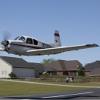

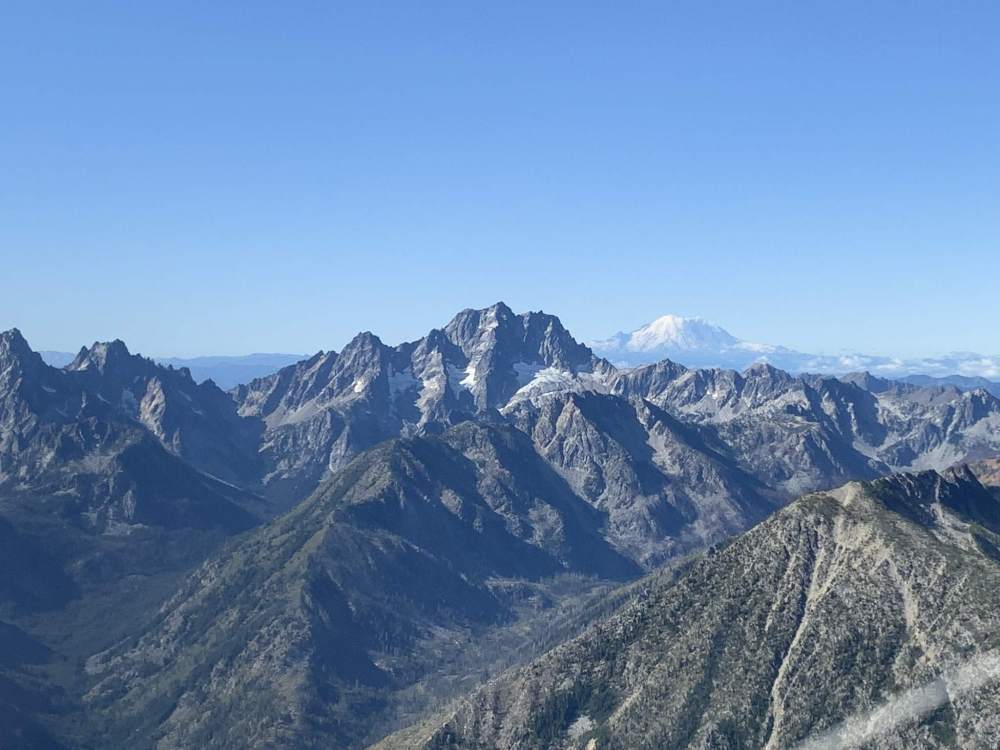

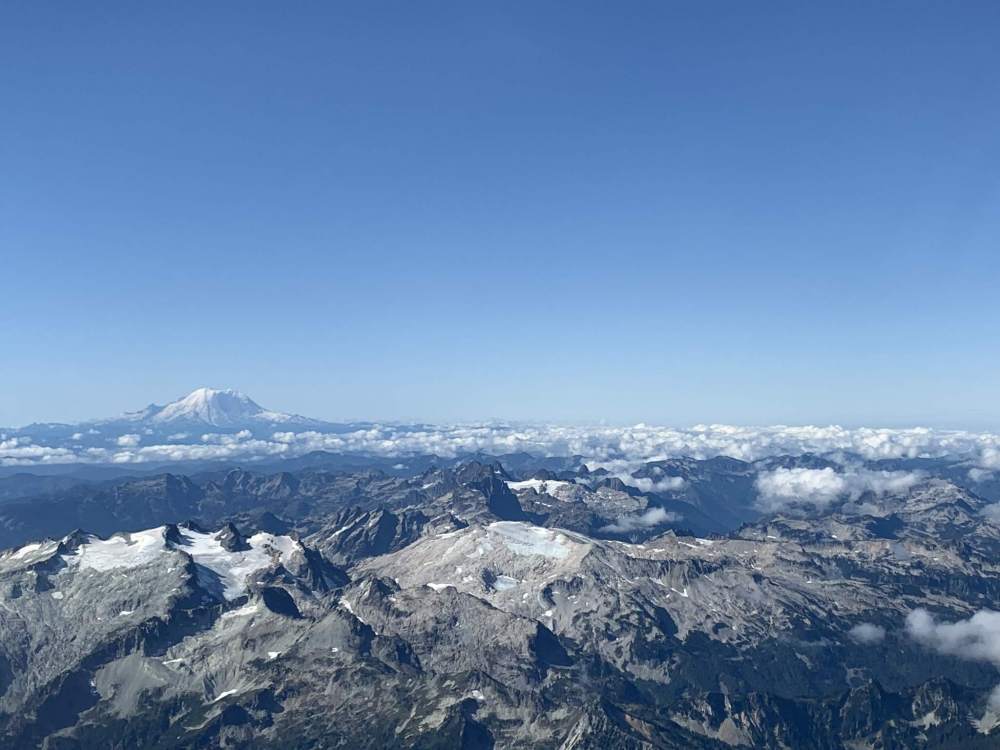
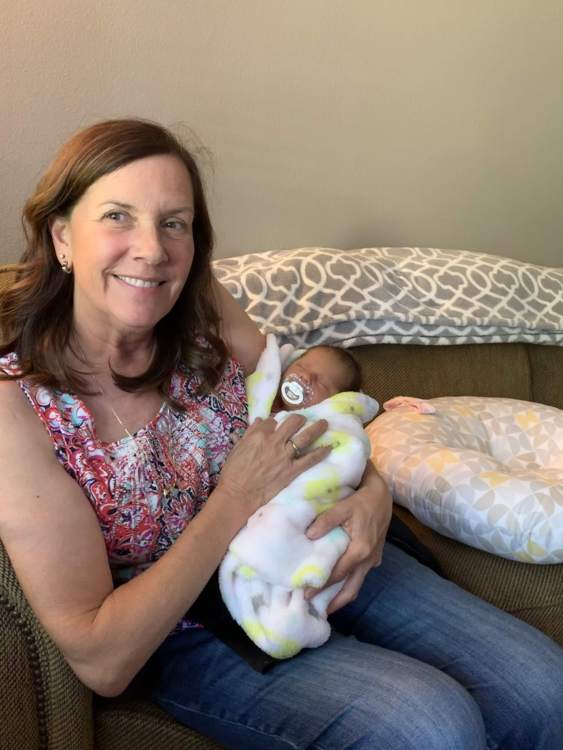




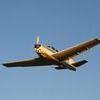


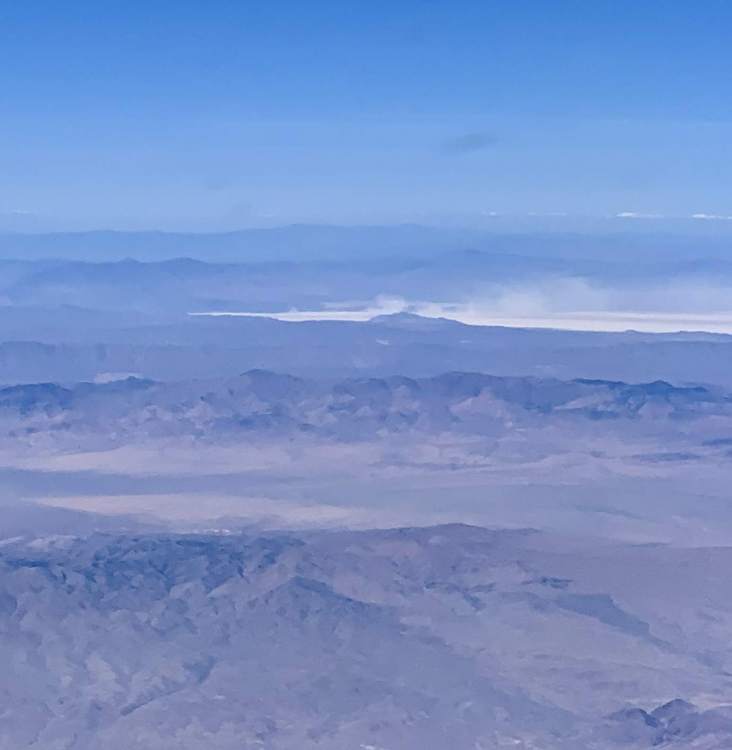
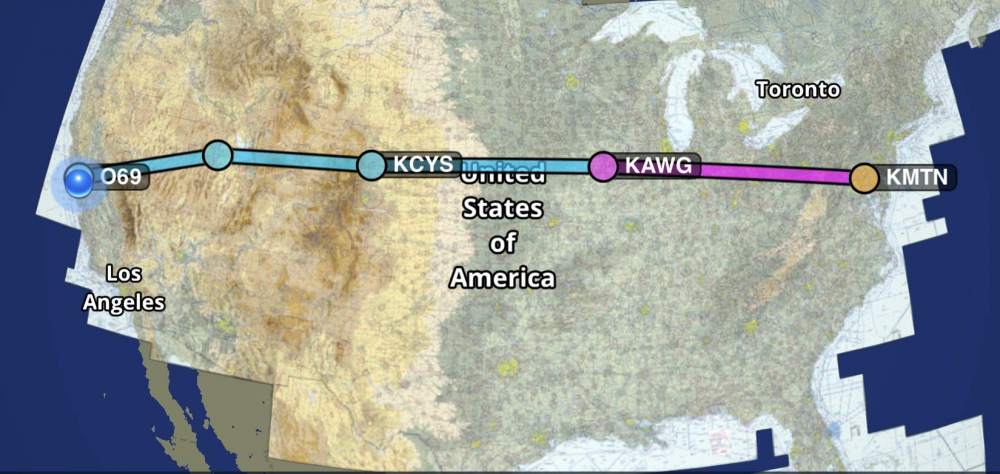
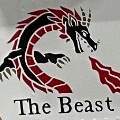

.thumb.png.7c67574d7b28f67b0b4a17760919b1ac.png)



